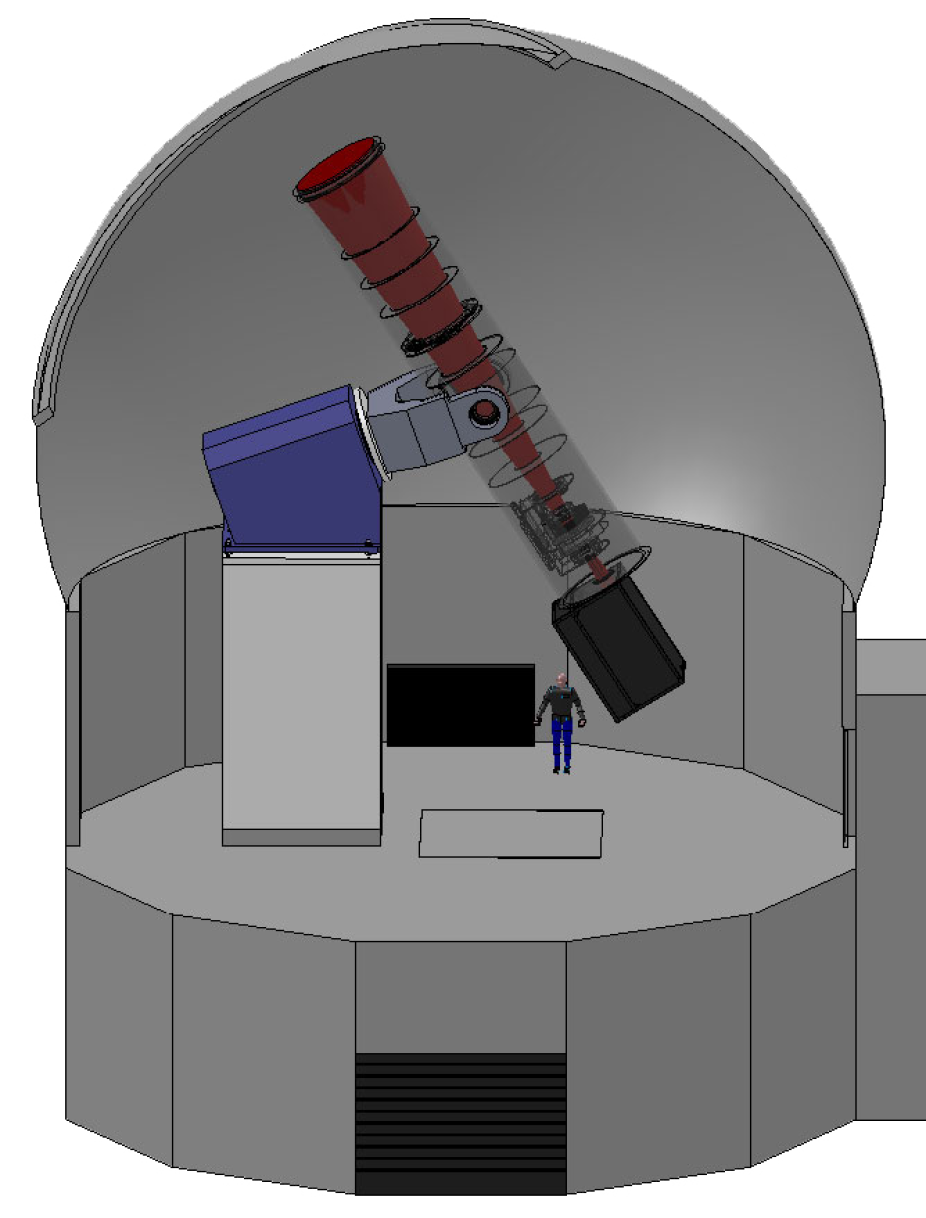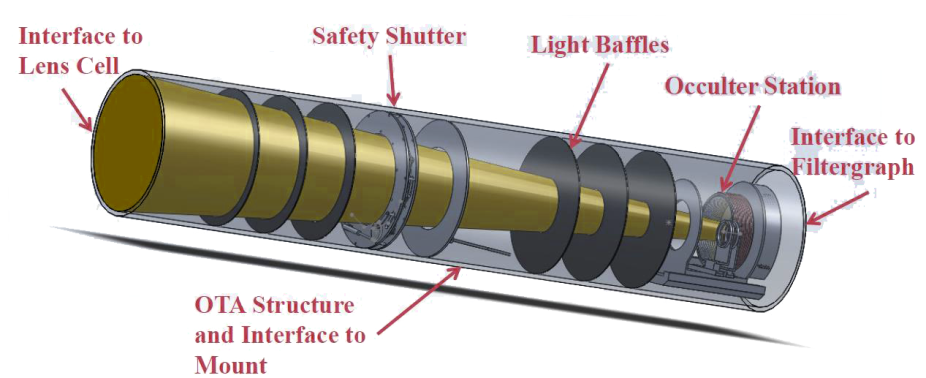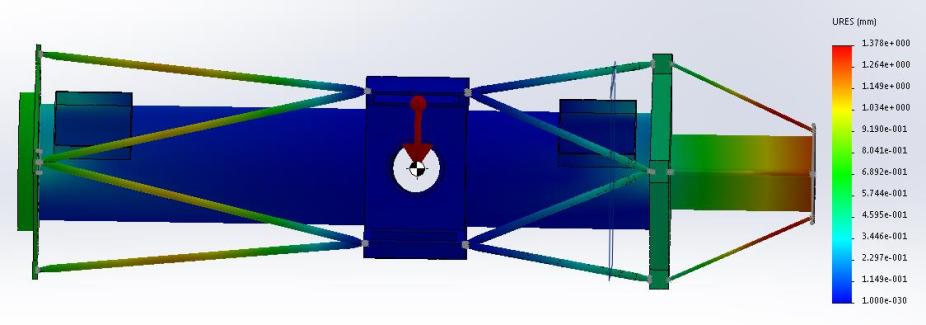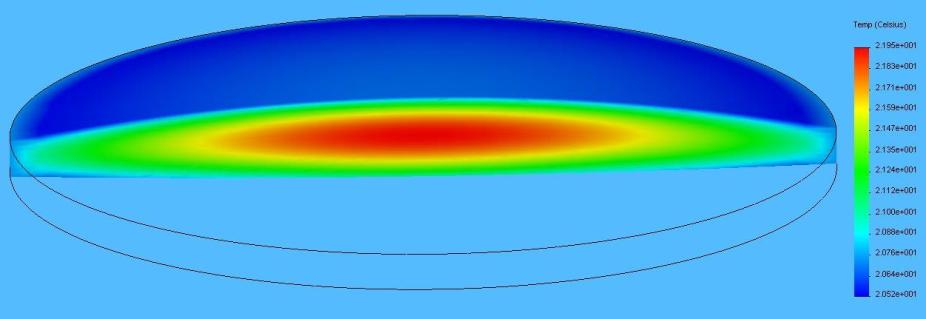Large Coronagraph

The 1.5-m aperture Large Coronagraph (LC) will continuously observe the radiation emitted by the corona in a number of visible and near-IR emission lines corresponding to plasma with temperatures in the 0.01 to 5 MK range. The LC post-focus instrumentation will analyze the polarization signatures of the emitted radiation and infer the direction and strength of coronal magnetic fields, as well as the physical properties of the coronal plasma including temperature, density and velocity. The LC employs an innovative refractive design to obtain routine measurements over a large field-of-view at the spatial and temporal resolutions required to address the outstanding problems in coronal physics. It will be the largest refracting telescope in the world.

The dome enclosure design is a scaled 5/8th’s design (similar to the Themis observatory dome). The shape is designed to protect against vibrations induced by wind flows around the dome while the rotating “operculum” allows the observatory to have just the minimum aperture needed for observations, thereby increasing the cleanliness of the interior space since a large aperture is not required.

An annotated rendering of the large coronagraph systems and mount are shown here. The main OTA is approximately 10m long and 1.7m in diameter.

The central component of the COSMO Large Coronagraph telescope is the Optical Tube Assembly (OTA) which is a structural element with interfaces to both the objective lens cell (on the front end) and the Filtergraph Sciene Instrument (on the rear end).


Modeling has been done to determine design feasibility. Example results are shown for optical tube flexure, lens flexure, and lens heating. These results show that these parameters are well within the tolerances of the science requirements.